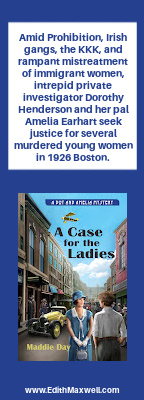by Diana Bulls
The first part of a three part series. The trip can actually be done all in one day, or you can break it up into several shorter trips. Trip One: Oakhurst; Trip Two: Oakhurst to Mariposa to Hornitos; Trip Three: Oakhurst to Hornitos to Coulterville.
With summer nearly here and gasoline prices soaring, it’s time to think of some simple road trips that won’t stretch the budget and will still be fun for you and the kids. Just up the road from Fresno is Oakhurst, California, home to a delightful historical park and museum complex that lots of folks don’t know anything about.

Oakhurst's famous Talking Bear
Once upon a time the Mi Wok, Mono and Chuckchansi people flourished in this area, mostly rolling foothills covered by oak and pine trees. This area is at the southern end of the gold fields of California, but the people who settled here were mostly farmers and merchants, wanting to create a community and raise their families. In the 1850’s the area became known as Fresno Flats and provided supplies to mines and lumber companies. Today it is known as Oakhurst, a town of 18,000 people. A visit this year is especially meaningful because they are celebrating 100 years since Fresno Flats was renamed Oakhurst.
In 1975, the Sierra Historic Sites Association began developing the site which would eventually become the Fresno Flats Historical Park. The park has been a true community effort, with the preservation, restoration, maintenance and operation activities being accomplished through donated labor, materials, funds and lots of volunteers.
Laramore House built 1878
The centerpiece of the park is the Taylor log cabin, circa 1870, the oldest building in the museum complex. The so-called “two-pen, dogtrot” design originated in the Ozarks and was once common throughout Northern California where timber was readily available. Its simple construction consists of two rooms, separated by a breezeway or “dogtrot.” One side was a kitchen/dining room/family room and the other the parents’ bedroom, each heated by a fireplace. Children slept overhead in an unheated attic that ran the full length of the house, accessible only by a ladder in the breezeway.
The Taylor log cabin, showing both rooms and dog trot breezeway, built 1870
In addition to these structures, there are a couple of early day one room schools, two 19th century jails, several other farm buildings and a piece of the Sanger flume. Kids will love the 1890 Raymond Jail that housed drunks and other minor offenders. Built with 2 x 6 inch boards laid flat and tied together by heavy spikes at the corners, it shows the standard construction for jails at this time. With a heavy door and barred windows high in the walls, there weren’t many escapes.
Raymond Jail built 1890
There are many other exhibits including a blacksmith shop, turn of the century schoolroom, general store and doctor’s office, in addition to many displays from the late 19th and early 20th centuries. There is also a gift shop with a wide selection of books and other interesting items.
The village and grounds are open from dawn to dusk for self guided tours, and include a nice picnic area. The museum and guided tours of the buildings are available from 10:00 AM to 2:00 PM daily. There is no admission fee.
To reach the Village and Park from downtown Oakhurst, turn right off Highway 41 onto Road 426–there is a traffic signal at this intersection and the famous Oakhurst Talking Bear–proceed on Rd 426 for about one-half mile, past another traffic signal, to Road 427. Be in the left lane as you approach this signaled intersection and turn left onto Road 427. Fresno Flats Historic Village and Park will be on your left in approximately three-quarters of a mile. The large, two-story yellow Laramore House is the most visible building as you approach the Historical Park. There is off-street parking at the front of the museum complex.
Detail of Laramore house construction
If you have decided to end your trip at Oakhurst, you might leave enough time to visit two more sites: Oakhurst’s Talking Bear and the Children’s Museum of the Sierras. Both are right on your way back from the Historic Village and Park. From Road 427, turn right on Road 426. At the stop light turn right on to Golden Oak Drive. The Museum is located on the left side of the street, 49269 Golden Oak Drive #104. The Talking Bear is located on the southeastern corner of the Road 426/Hwy 41 intersection (in front of a Century 21 agency).
Diana’s husband, mother & daughter (Jim, Marilynne, Rebecca)
The Children’s Museum is a discovery museum for young people ages 2-12 and their families. It provides hands-on exhibits and programs designed to encourage visitors to learn by doing, imagining, creating and making choices. Hours now through mid-June are Tuesdsay-Saturday, 10:00 AM to 4:00 PM; Sunday, 1:00-4:00 PM. Summer hours start in mid-June through mid-Sept: Tuesday-Saturday, 10:00 AM to 5:00 PM; closed Sundays. Admission is $4per person but children under two are free. You can call in advance to arrange educational tours at a discount price (559-658-5656).
Since 1923, the Talking Bear has been an Oakhurst landmark. The life sized, fiberglass grizzly bear talks about the California Grizzly and kids seem to love him. It is a perfect photo op to end your short trip to Oakhurst and, best of all, it’s FREE!















0 Comments
Trackbacks/Pingbacks